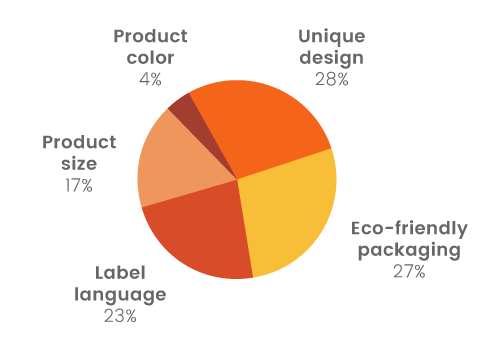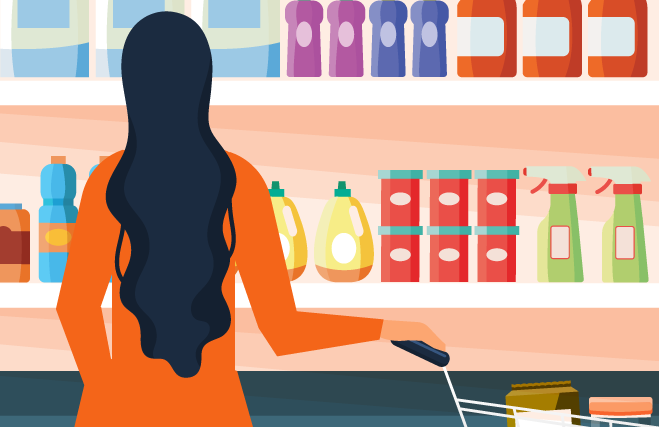At Novak Birch, we know the importance of clear communication. In fact, we’ve talked about why it’s important to write clear, compelling marketing copy on our blog. But as we all continue to navigate COVID-19, it turns out that consumers are affected by a product’s packaging design even more than its language…and it’s likely going to stay that way!
A recent study by packaging products and services provider Shorr found that the coronavirus pandemic has resulted in some long-term changes in consumer behavior, providing insights into how shoppers interact with packaging.
As we all continue to navigate COVID-19, it turns out that consumers are affected by a product’s packaging design even more than its language.
Where’s My Go-To Brand?
When the pandemic strained the production and distribution of goods—and as many consumers panic-purchased in bulk quantities—many were forced to try brands that they weren’t familiar with. (Store brand toilet paper, anyone?)
In fact, the 2020 Food Packaging & Consumer Behavior Report found that 47% of those surveyed have tried new brands…and surprisingly, a whopping 88% planned on purchasing from that same brand for the foreseeable future.
The most significant factors in choosing an unfamiliar brand included:

That’s right, unique design was the top factor, followed by its environmental friendliness, and then the information conveyed on the label, followed by product size and color.
And these habits are likely to stick around post-COVID, with 61% percent of consumers reporting that their purchasing habits have changed how they will shop in the future.
41% of study respondents say that packaging and labeling have become more critical since their preferred products were unavailable.
Skipping the Stores
With COVID-19 came an influx of contact-free shopping options, including the old standby online shopping and delivery as well as an increase in curbside pickup options from major retailers such as Walmart.
And although the CDC advises that the contraction of the virus is unlikely via the touching of packaging, a Medallia Zingle survey COVID-19 and the Future Of Commerce found that 54% of consumers are still limiting their in-person shopping and choosing curbside pickup and delivery more. What’s more, a quarter of respondents said that they are exclusively relying on contactless and delivery except for emergencies.
This could be contributing to consumers’ increased likeliness to continue buying a particular brand while online shopping—if they are reasonably satisfied with a product and it’s available to purchase, they may be more likely to click “buy again” rather than being attracted to unique packaging or perusing labels in-store.
What’s a Brand to Do?
So, what does this increased focus on packaging and label design mean for brands? Here are three key takeaways:
- Make It Eye-Catching: Consider redesigning your product packaging to appeal to online shoppers and in-store shoppers who want to get in and get out quickly (and safely). According to Dieline, packaging needs to be even more eye-catching than ever, to catch the eye of consumers faster and with purpose. If someone grabs and goes, they will focus on the primary display panel of the package (more on this in the next bullet).
- Design for Web: Keep in mind consumers’ increased preference for purchasing food products online, as it requires less contact. So while designs should be eye-catching, a simple and clear product identity is also important, as many websites might only provide a small visual window for the product image. The front panel of your products should allow consumers to make quick purchasing decisions.
- Use Straightforward Language: Copy on your packaging and labels should be clear and straightforward, conveying what the product does, what the brand is, and any preparation or usage requirements within the first four to five seconds of reading. While the packaging design might be the first thing consumers notice, clear, informative copy that reassures them that your product is exactly what they need could be what entices them to add it to their cart.
Decisions, Decisions
As consumers continue to determine which products to bring into their homes, product packaging design, language, and safety will all play a role in their decision-making process. According to Regan Leggett, Executive Director, Nielsen Global Intelligence, “[…] consumers will be seeking greater assurance that the products they buy are free of risk and of the highest quality when it comes to safety standards and efficacy, particularly with respect to cleaning products, antiseptics and food items.”
